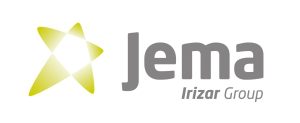“Collaboration between TAE Technologies and Jema Energy has been crucial for the succesful completion of this challenging project”, Dr. Slepchenkov
In the last decades, Jema Energy has developed tens of power converter systems for most of the top nuclear fusion laboratories worldwide. All these laboratories were supported and funded by national public goverments or multi-country consortiums. Common features for all these projects were that they had a long execution time frame, from the conceptual design until the project execution and a lifetime for the systems over 20 years.
From the power converters manufacturers point of view, the development process was well-defined by a detailed and rigid technical spec. The system topology, including previous simulations, technical requirements, design margins, tests, etc. were imposed and fixed.
In the last few years, private funded companies have entered into the nuclear fusion sector changing radically the traditional reality. These new companies have challenging and quite challenging plans in terms of schedule and experiment results, requiring a new approach for the manufacturers, requiring shorter lead times, flexibility and adaptability during the project execution.
A significate example of this new situation are the new HV Switching Mode Power Supplies that Jema Energy have recently supplied for the Neutral Beam System for TAE Technologies, Inc. in the USA.
TAE Technologies, Inc. required four (4) new power supplies for a novel NBI configuration in order to achieve their scientific program. The schedule was really aggressive: 6 months, including FAT (Factory Acceptance Tests) and overseas shipping. From the very beginning, it was realized and agreed from both parties that the way of facing so big challenge would be different than the regular one. Under the leadership of Dr. Mikhail Slepchenkov (TAE Technologies Lead Electrical Engineer) and his team and Jema Energy engineers tackled the project working and coordinating the project as a single team.
The project has been completed successfully on time, achieving (even exceeding) the initial technical requirements and the new ones that came up during the project execution without extending the original schedule. This so efficient collaboration and coordination between client and vendor was crucial for the successful completion of the project.





